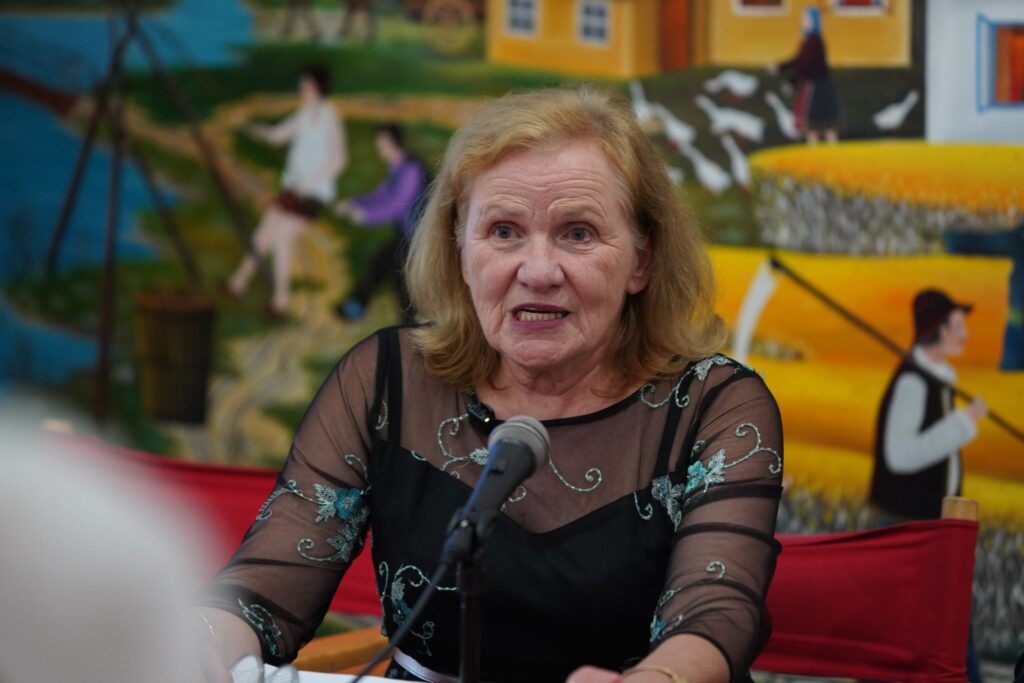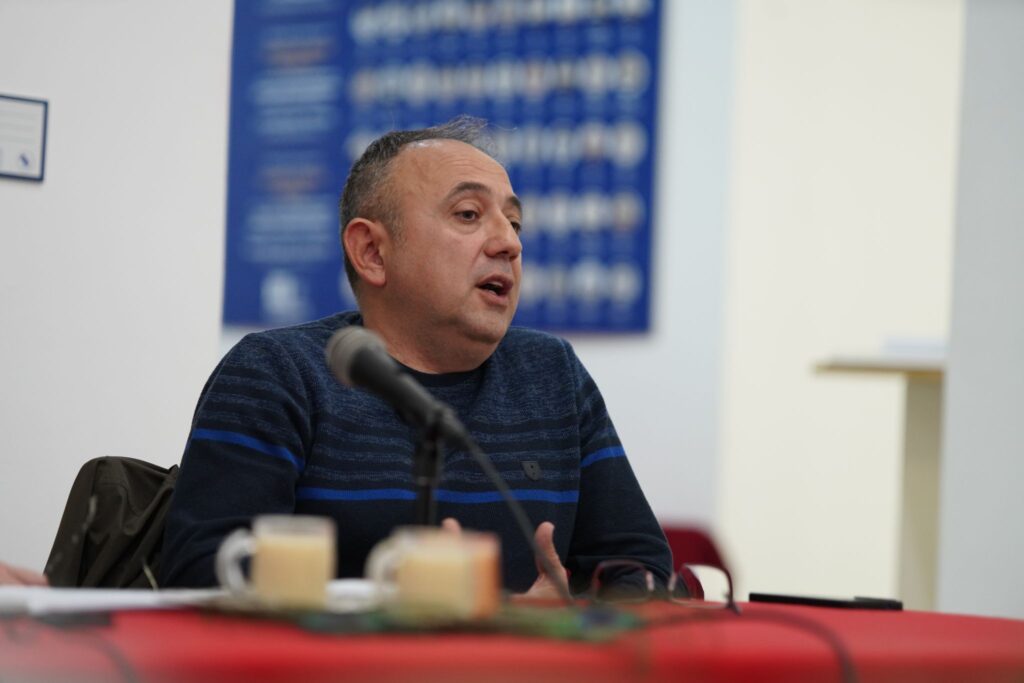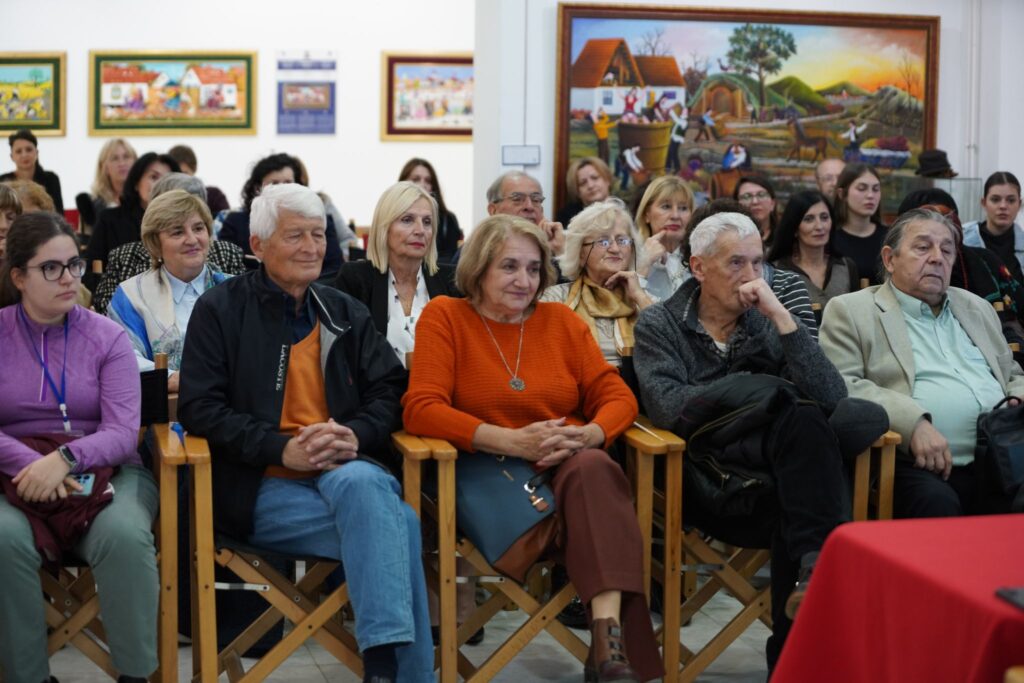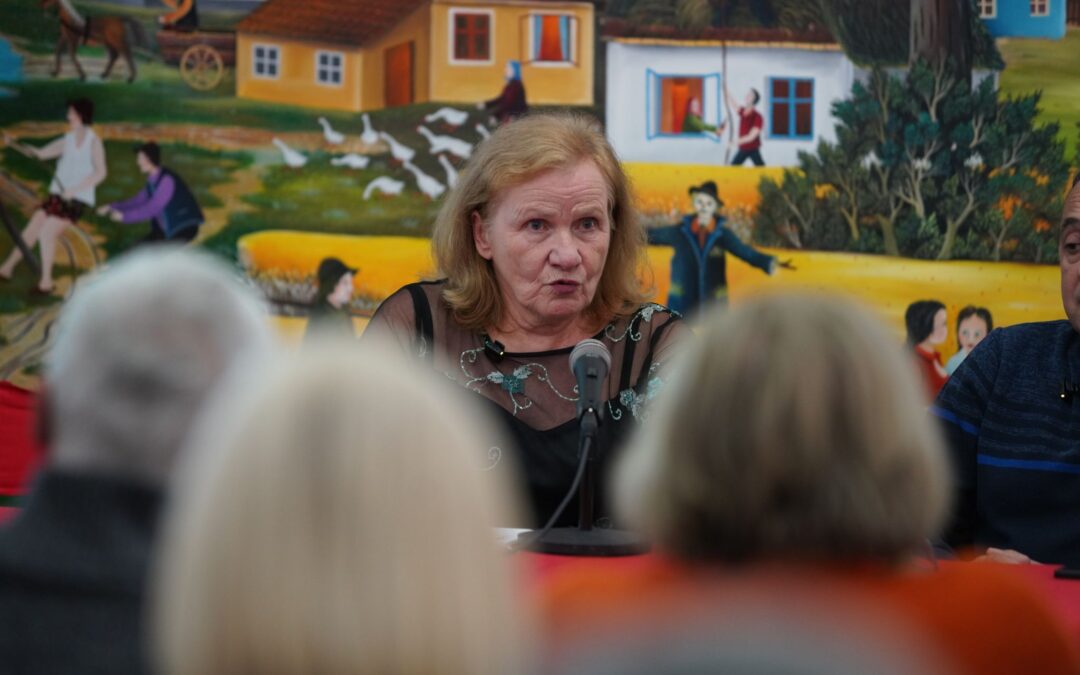The lecture by Marina Lukić Cvetić, art historian, gastroheritologist, and founder and curator of the Museum of Spoon sweats in Kraljevo, titled “It’s Not as Simple as Boza: On the History and Culture of the Boza-Making Craft”, was held at the Gallery of the National Museum Kraljevo, on Friday, November 7th, 2025, starting at 7 p.m.
As a researcher of gastronomic heritage, Marina Lukić Cvetić spoke about the history, origin, and cultural significance of the beverage boza, as well as the boza-maker’s craft, one of the most distinctive traditional trades in the urban centers of the Balkans. She emphasized that gastroheritology – the study of food heritage – is still in its early stages in Serbia and that more systematic research is needed. Marina Lukić Cvetić highlighted that food and drink are essential elements of intangible cultural heritage, offering valuable insight into a society’s history, social structure, and everyday culture.

Boza is a fermented, mildly sweet beverage originating from the Middle East, which spread over centuries to Central and Western Asia, the Caucasus, and Southeast Europe. Its roots trace back to prehistoric times, with early versions made from fermented millet in ancient Mesopotamia. The earliest written mention dates to 1073, while the term “boza” appears in the 14th century. Made from various grains – most commonly millet, barley, corn, or wheat –boza’s flavor and texture vary by region. She also referenced historical disputes between Persians and Ottomans over its origin.
In the Ottoman Empire, boza was a favorite among Janissaries for its nourishing and energizing qualities. While some versions contained low alcohol content, the sour, non-alcoholic variant became the standard. The famous 17th-century traveler Evliya Çelebi recorded that Istanbul had over 300 boza shops and more than 1,000 workers involved in its production and sale.
In Serbia, boza appeared in the 19th century, first in the south and later in larger towns and fairs. Marina Lukić Cvetić highlighted the role of the Gorani people, an ethnic group from the Gora region, who as confectioners played a key role in preserving the tradition of boza-making in Serbia. Their pastry shops became the primary places for producing and selling boza in many cities, including Kraljevo.
Ethnographer Stanoje Mijatović, in the Serbian Ethnographic Collection (1928), classified the boza-maker’s trade among “fairground crafts”. Boza was produced in modest conditions, in small workshops, and sold on the streets and markets. Boza vendors carried their product in wooden buckets, and in urban centers, they became symbols of old bazaars.

The lecturer then introduced her special guest, Mr. Benbel Ašimi, descendant of the renowned confectioner Musa, founder of “Pelivan”, one of the oldest pastry shops in Kraljevo. He explained the boza-making process, emphasizing that the original recipe contains no added yeast, relying instead on lactic acid bacteria (lactobacilli) – natural probiotics that aid digestion and benefit the body. Boza is rich in B vitamins (B1, B2, B3, B6), phosphorus, and iron, making it a natural energy drink. In the past, a single glass could nourish and refresh a worker or soldier, much like today’s industrial energy drinks.
The next segment of the lecture focused on boza across the region and the world. Boza has many regional variations across the Balkans and Eastern Europe, each reflecting local traditions and culture. In Bulgaria, it is a national drink, with the Radomir variety typically served with pie or banitsa. In North Macedonia and Kosovo, the craft is preserved among the Gorani, who maintain old family recipes. In Sarajevo, the original Sarajevo boza bears the “Sarajevo Quality” label and dates back to the 15th century. Albanian boza is lighter, thinner, and sweeter, often bottled and sealed. In Romania, a similar drink called braga is thicker and comes in various colors. In Poland, a lemon-boza variant emerged thanks to Macedonian immigrants in the early 20th century. In Ukraine and Russia, boza is consumed in winter, often warm and nourishing, while in Turkey, the most famous version is “Vefa” boza from Istanbul –a creamy, slightly sour drink served with cinnamon and roasted chickpeas, considered a symbol of the city and a key part of its culinary heritage.

Marina Lukić Cvetić also explored boza in art and literature, citing Orhan Pamuk’s novel “A Strangeness in My Mind”, in which the protagonist, boza seller Mevlut Karataş, symbolizes nostalgia for old Istanbul and a bygone way of life. In this context, boza is portrayed as a drink that “preserves memory” and connects past and present.
She concluded by inviting the audience to see boza not just as a beverage, but as a cultural artifact that tells the story of taste, migration, and shared Balkan heritage.
The lecture concluded with a boza tasting and an engaging discussion with the audience.
